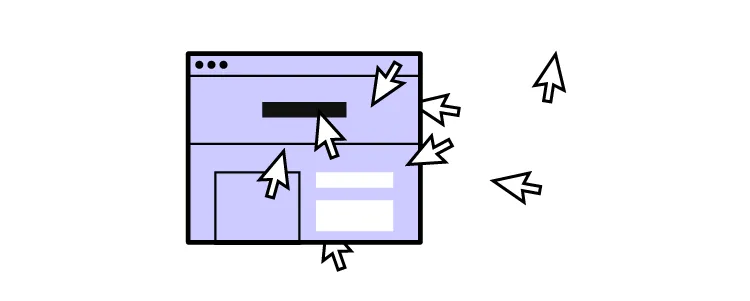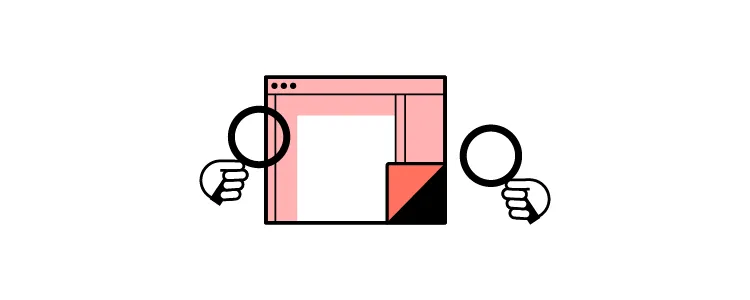How to Hook Users With Habit-Forming UX Design
Apple. Facebook. Twitter. Google. Pinterest. These companies all have one thing in common–they create habits among their users. People use these products habitually on a daily basis, and they’re so compelling that many of us struggle to imagine life before they existed.
But creating habits is easier said than done. Even though I’ve written extensively about behavior engineering and the importance of habits, there are few resources to give designers the tools they need to design and measure customer habits. That’s why I wrote “Hooked: How to Build Habit-Forming Products,” which explains the four-step Hook Model that can help form habits among your users.
Design habit-forming digital products your customers will love with UXPin’s design tool. Prototype at higher fidelities with real-like functionality for improved testing and results. Sign up for a free trial.
Who is Nir Eyal?

Before Nir describes the Hooked Model in his own words, we thought we’d give him a quick introduction. Nir Eyal is a Wall Street Journal bestselling author of Hooked: How to Build Habit-Forming Products and “Indistractable: How to Control Your Attention and Choose Your Life.”
Nir taught as a Lecturer in Marketing at the Stanford Graduate School of Business and Design School and has worked in the video gaming and advertising industries, where he learned and applied behavioral strategies and techniques for influencing users.
Nir is an active investor, backing habit-forming products and startups. His most notable investments include Eventbrite, Kahoot!, Anchor.fm (acquired by Spotify), Canva, Refresh.io (acquired by LinkedIn), Product Hunt (acquired by Angelist), and Wise App, to name a few.
Check out Nir’s blog, nirandfar.com, about behavioral design–the intersection of psychology, technology, and business. We also recommend watching Nir’s 2015 Ted Institute talk about habit-forming technology.
What is Behavioral Design?
Nir Eyal’s Hooked Model is based on behavioral design–how to influence user behavior through product design.
Human beings are creatures of habit. If you can design a habit-forming product, you essentially have someone “hooked,” thus increasing usage, user engagement, customer life cycle, growth, and other crucial business metrics for long-term success.
The hooked model is one of the most effective behavioral design frameworks because it identifies patterns that keep users habitually engaged. Most importantly, Nir’s Hooked methodology aims to apply these methods ethically so that companies deliver habit-forming products customers love.
Here is more about the Hooked Model from the creator himself, Nir Eyal.
The Hooked Model
Before we take a look at Habit Testing, it’s important that we familiarize ourselves with the Hook Model–aka the Hooked Model.
As described in my book, the Hook Model is a four-step process businesses use to hook users and form new habits among them. The four parts of the model include trigger, action, investment, and variable reward.
Trigger
The trigger is the spark for a behavior that gets someone into a system. There are two types of triggers:
- External Triggers
- Internal Triggers
The external trigger alerts users with something like an email, link, or icon. Internal triggers happen within the system and are formed as users cycle through successive hooks while using the product.
Action
Action is the behavior taken when a user anticipates a reward–for instance, the action of clicking on an image on your Facebook feed.

When you click that image, you anticipate that you’ll be taken somewhere interesting, such as the latest listicle on Buzzfeed. This anticipation is essential to the model because it draws upon usability design to drive users to take action.
Variable Reward
The variable reward is the part of the model that allows you to create a craving in users. Rather than using a conventional feedback loop, you can serve a multitude of potential rewards to hold a user’s interest.
For example, Pinterest does this by showing you images that are relevant to your interests along with other things that might catch your eye.
Investment
The investment phase is the part where the user now has to do some work. Think of it as giving back to the product, which can take time, data, effort, social capital, or money.
But this isn’t solely about swiping their credit cards. Investment is an action that will improve the product, such as inviting new people into the system, giving feedback on features, etc.
The Hook Model is a great way to start considering how you bring users into a system, hook them and keep them there through variable rewards and internal triggers. In the end, you’ll be able to build habits among your users that will have them coming back for more.
An Introduction to Habit Testing
Habit Testing fits perfectly into the Hook Model.
With Habit Testing, you’re better able to answer three vital questions:
- Who are your devotees?
- What part of your product forms habits?
- Why do those parts of your product form habits?

A prerequisite to Habit Testing is having some kind of product up and running. Of course, completing your business model hypotheses and exploring how your product will create user desire before launching a minimum viable product is a good idea.
Once you’ve released your site or app into the wild, you must start reviewing data. Don’t track everything: focus on when users interact with your website, including the path of their visit.
Let’s go through the three steps of Habit Testing.
Step One – Identify
The first step is where we look at the first question of Habit Testing: “Who are the habitual users?”
Here are some tips for doing that:
- Define the characteristics of a devoted user. Ask yourself how frequently someone should use the site, assuming that you will resolve most bugs and the product is nice and polished.
- Be real with yourself. If you’re working on a social network app like Instagram, you’d expect habitual users to be on the app many times a day. But if you’re building a movie recommendation site, you might not expect people to visit more than three times per week.
- Crunch the numbers. Once you know how often someone should use your site, check the data to see how they stack up against expectations. Create a cohort analysis as a baseline for measuring upcoming iterations.
When defining the frequency of use, don’t be overly optimistic by thinking only of super users. Aim for a reasonable guess. For example, you could average the product use between yourself and your coworkers.

The more frequently someone uses a product, the more likely they’ll form a habit.
An excellent way to measure whether someone will actually use your product is to see whether your team is using it. Take, for example, Twitter. The social media giant was born within Odeo–the original company Biz Stone and Jack Dorsey founded. They knew they were on to something with Twitter because the engineers couldn’t stop playing with it.
In any case, you’ll hopefully have at least a few users who interact frequently enough with your product for you to call them devotees.
Editor’s note: To learn more about how to influence customer behavior with design, check out the free e-book Interaction Design Best Practices.
Step Two – Codify
The next step is to codify the steps devotees took using your product so you can understand what hooked them.
First, how do you know you have enough devotees? A safe guideline is roughly 5%.
Keep in mind, however, that your rate of active users will need to be much higher to sustain your business. If at least 5% don’t find your product useful, you have a problem. If you have that 5%, it’s time to find the Habit Path, a series of similar behaviors shared among your most loyal users.
Not every user will interact with your product in the same way. Each one will have a unique data fingerprint, which will reveal usage patterns that will help you discover the Habit Path.
Let’s go back to Twitter. The social media app discovered that once new users followed enough other members to odds of more people using their site increased.
Here’s how you determine which of the steps in the Habit Path were critical for creating devoted users:
- Create a hypothesis. Where was the turn that turned passers-by into devotees? This hypothesis could feel like assuming causation from correlations–but it’s the best you’ll have in the murkiness of launching a new product.
- Talk to users: Learn how they use the product and why they use it. For instance, you can walk them through the actual steps that got them hooked.
Step 3 – Modify
Now that we have a hypothesis, it’s time to return to the build. We need to measure, learn and take new users down the Habit Path we’ve discovered.
For example, leveraging their Habit Path, Twitter’s onboarding process suggests accounts for new users to follow. You’ll want to do something similar once you’ve identified the path that turns onlookers into devoted users of your product.
Design Habit-Forming Products With UXPin
UXPin is a design tool that enables designers to prototype and test at higher fidelity with real-like functionality. Usability participants and stakeholders no longer have to “imagine” what a feature does with UXPin’s fully functioning interactive prototypes.
This higher fidelity and functionality means design teams get meaningful feedback and accurate results during testing with end-users. The limitations of a design tool no longer constrain designers. Instead, they can focus on building products and features customers will love.
Discover how code-based design can revolutionize your product development and deliver high-quality user experiences to your customers. Sign up for a free trial to explore UXPin’s advanced prototyping features.




